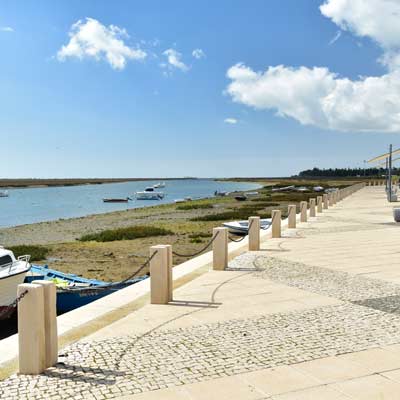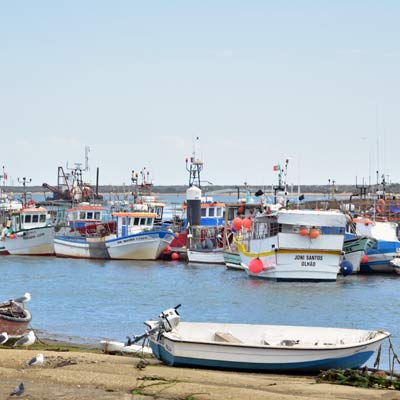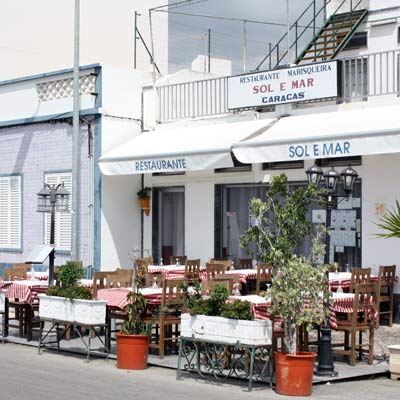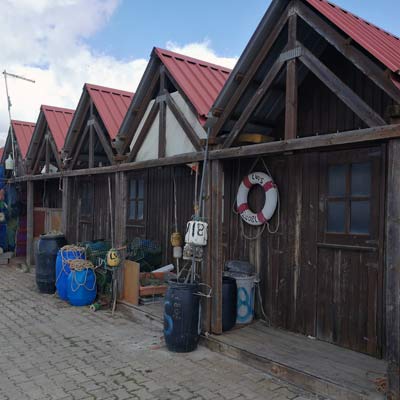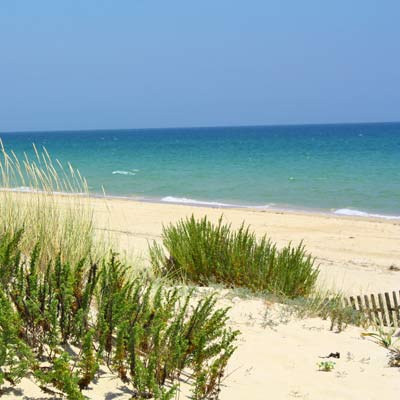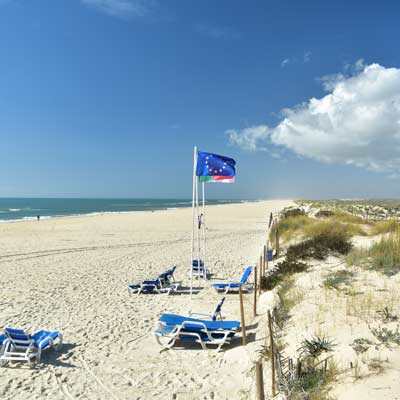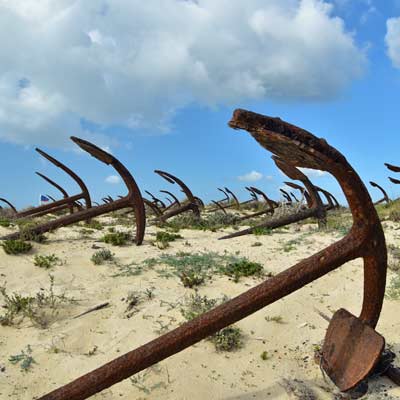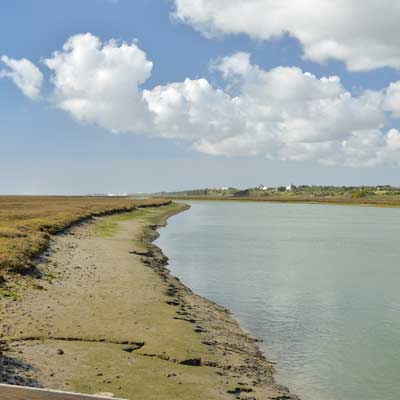Algarve-South-Portugal.com
The best independent guide to Tavira
Algarve-South-Portugal.com
The best independent guide to Tavira
Santa Luzia, Algarve, Portugal: An Independent Travel Guide
In the quiet Eastern Algarve, the small village of Santa Luzia proudly holds the title of Portugal's octopus capital.
This is a community where life revolves around a single, revered delicacy. By day, the harbour front is lined with the clay pots used in traditional and sustainable fishing; by night, the village’s specialist fleet heads out to sea. This octopus expertise extends from the sea to the kitchen, where the waterfront restaurants have perfected the fine art of cooking this notoriously tricky dish
The village's tranquil character is a reflection of its setting on the edge of the Parque Natural da Ria Formosa. Santa Luzia’s low-rise, whitewashed houses overlook the calm tidal lagoons and salt flats that are a haven for birdlife. A short ferry ride across these waters reveals the region’s other great treasure: the pristine sandbar islands. Here you will find some of the Algarve’s quietest beaches, from the unspoilt sands of Praia da Terra Estreita to the shores of Praia do Barril, home to the striking anchor cemetery.
Santa Luzia offers a rare glimpse into an authentic Portuguese fishing community, one that has proudly retained its unique heritage. It is a wonderfully rewarding trip from nearby Tavira and location for an unforgettable seafood lunch, or for those wishing to immerse themselves in its unhurried pace of life.
Related articles: Tavira Introduction - Praia do Barril
What is there to do in Santa Luzia?
The main attraction of Santa Luzia is the village itself.
This is a traditional fishing village, which is authentically Portuguese and has barely altered by the influences of modern tourism. There is a colourful fishing fleet, which fishes for Octopus during the night and then sells the fresh catch in the small fish market every morning.
For beaches there is the Ilha de Tavira, a sandbar island that offers a 10km shoreline of golden sands, turquoise waters, and beautiful natural scenery.
The Praia da Terra Estreita (on the Ilha de Tavira), is the closest beach to Santa Luzia and is virtually unknown by foreign tourists. Slightly further along the coastline is a Praia do Barril, an abandoned Bluefin Tuna fishing village, where the fleet’s anchors have been placed in the sand dunes as a lasting memorial.
For those seeking some nature, the Santa Luzia is positioned on the edge of the Parque Natural da Ria Formosa; with its variety of birds and small aquatic life. During the summer there are boat tours and bird watching tours around this area.
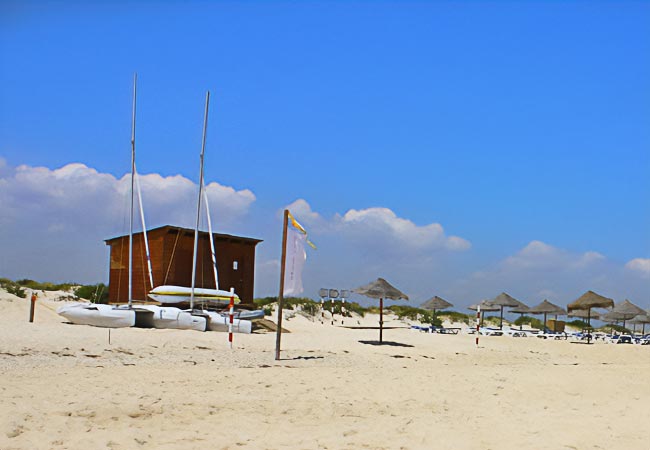
The stunning Praia Terra Estreita beach
Santa Luzia is only a Village
If you are planning a holiday or day trip to Santa Luzia, you should realise that it is a tiny village, with only a handful of restaurants and a small harbour front.
For a day trip, Santa Luzia could be combined with Praia do Barril and the anchor cemetery, along with an extended lunch in one of the excellent seafood restaurants. Santa Luzia is also situated on the Algarve Cycle Path (the Ecovia do Litoral) and can be easily included as part of a bike ride or short hike from Tavira.
As a holiday destination, Santa Luzia is ideal for tourists looking to experience a unique, traditional Portuguese way of life in a very calm and peaceful setting. Santa Luzia is far removed from the crowds of tourists who visit the central Algarve but is still within walking distance (40minutes) of Tavira, a major resort town.
Octopus (Polvo) and Santa Luzia
No visit to Santa Luzia is complete without sampling octopus (Polvo in Portuguese), a delicacy adored by the Portuguese. This dish is challenging to cook, but the village has mastered the fine art and is a speciality of the restaurants that line the harbour.
Insight: Octopus is challenging to cook as it transitions from undercooked (rubbery and chewy) to overcooked (disintegrates and melts always) incredibly quickly.
The fishing fleet of Santa Luzia uses traditional and sustainable methods of fishing for the Octopus which have barely altered in generations. The fishing technique uses clay pots that are lowered onto the seabed, and the unwitting Octopus are tempted to swim in but are unable to escape. During the day these clay pots can be seen drying along the harbour front or piled up on the fishing boats.
The otherwise sleepy harbour comes alive each morning when the octopus catches are brought ashore and sold in the fish market to wholesalers and local restaurants.
Santa Luzia Beach, The Praia Da Terra Estreita
To the east of Praia da Terra Estreita is the Praia de Tavira; the most developed section of the island, while to the west is the Barril Beach and the Cemetery of Anchors. Both beaches can be reached on foot from Praia da Terra Estreita and takes around 30 minutes.
Praia da Terra Estreita is always much quieter than Tavira or Barril, but there are only basic facilities available. It is recommended to head to Praia da Terra Estreita in peak season to escape the crowds of beachgoers.
Cycling and hiking to Santa Luzia
Santa Luzia is only 3km southwest of Tavira and can be reached easily along the Algarve Cycle Path, which is perfect for those wishing to explore at a leisurely pace. This route has been purpose-built, following the quiet R151 road, and is perfectly safe for those of all cycling abilities. Bikes can be hired from either Tavira or Santa Luzia.
The route is also suitable for hikers and takes around 40 minutes to walk. More adventurous hikers can also extend the route, and continue on to Praia do Barril beach (5 hours). From here it is easily possible to walk the length of the beach to Ilha de Tavira and catch the ferry back to Tavira
The Parque Natural da Ria Formosa
Santa Luzia lies within the Parque Natural da Ria Formosa. This natural park protects the saltwater mudflats, tidal lagoons and sandbar ecosystems along the coastline and is an important habitat for birds and small aquatic life.
The waterways are crucial stopover for birds migrating between Europe and Africa, and has a permanent population of wading birds, such as Spoonbills, Egrets and Ibis.
Travel to Santa Luzia
Interesting facts about Santa Luzia
Origin of Santa Luzia: The village was named ‘Saint Lucy’ following the recovery of a holy relic by a local fisherman, which had been lost out at sea during a storm.
Our most popular guides to the Eastern Algarve
